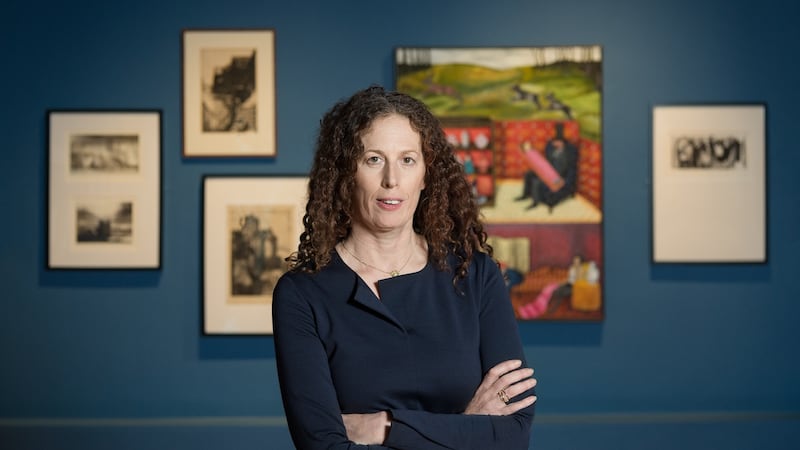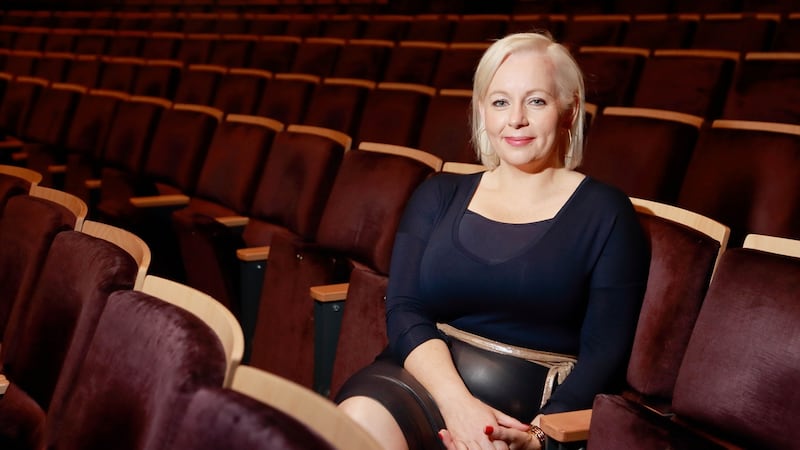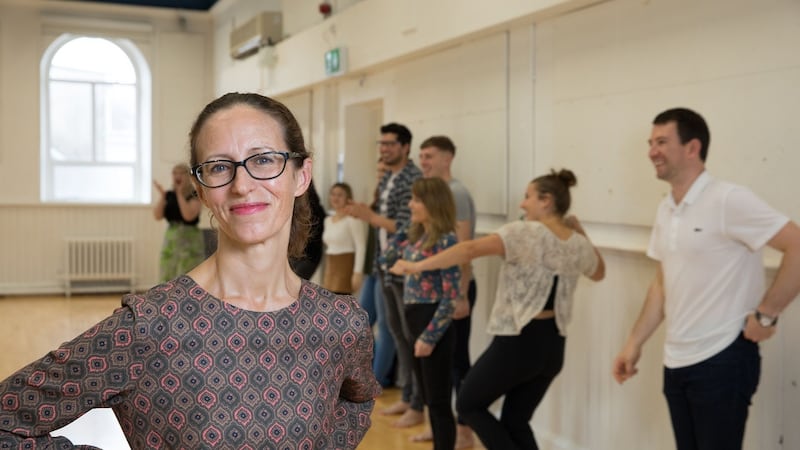"A city on the rise is a beautiful thing," said Cork City Council's chief executive Ann Doherty recently. She was speaking both metaphorically and physically, and why wouldn't she with sky-high developments actual and proposed springing up over the quays and the council itself agreeing on an expansion plan to incorporate districts from across the immediate county bounds.
Although the secular steeples may eclipse the city's spires, altitude is not everything. In the programme for the current Cork Midsummer Festival, the City Hall proclaims "a city of art, a city of culture, a city of making". The transient gaiety of the festival obscures the fact that on the ground another kind of change is taking place, aspirational in itself but rooted in three women whose interwoven cultural responsibilities will guide the street-level experience of life in Cork.
Appointed in late 2017 as director of the Crawford Art Gallery, Mary McCarthy came into position early in February. Next door at the Cork Opera House, Eibhlín Gleeson was appointed chief executive in 2015. Jools Gilson has been professor of creative practice and head of the University College Cork’s (UCC) school of music and theatre since 2016.
Now managing the first refurbishment schedule of a long-term building budget of €22 million under Project Ireland 2040, McCarthy was in the audience in February when an eight-year partnership between the university and the opera house was announced. Never a bystander, she greets with enthusiasm this enterprising collaboration by which the opera house becomes the practical focus for students of the college's schools of music and theatre. A theatre artist in residence will be based at the Opera House and teach at the college; by next September an MA in arts and cultural management – again physically centred on the Opera House – will be introduced and a jointly-funded PhD programme is part of the overall scheme to which UCC will allocate an annual investment of €60,000 over the next eight years.
Exciting time
“This is an exciting time in Cork,” says McCarthy. “There is a palpable sense of change, especially among people who do not see art at a remove from civic life. The Opera House is a key neighbour and although we have different core purposes, the simplicity of our proximity means we can share a vision of the public space in a key downtown commercial location.”

A small city can breed useful collusions, as with Rónán Ó Dubhghaill, UCC’s vice president for external affairs and Martin O’Donoghue, business development manager at the Opera House, whose discussions about partnership opportunities between both bodies spawned this initiative which is currently being examined as a possible template for Unesco’s Cities of Lifelong Learning project. “They both really bought into this opportunity,” says Gleeson, “and also professor Jools Gilson and I dug deep and decided it should be something very specific. UCC must be applauded for this: not many institutions are prepared to really commit to the arts so this is a very admirable position and we will see the benefits – I’ve no doubts about that.”
With extensive experience in arts management in Ireland and abroad (including a fellowship at the Kennedy Centre for the Performing Arts in Washington DC) as well as three years as general manager at the Opera House prior to her appointment as chief executive, Gleeson agrees that the house won’t be offering tuition in performance. “No, there won’t be a creative element,” she says. Her job has been to hold the line of a very strategic business model in which in-house productions, although providing 60 per cent of the live musical presentations, are “definitely risky”.
Instead, “my passion is for training people in the business of the arts. We’ll teach them how to use the plant, the equipment, the facilities, the maintenance of a building and of a company, how to mount productions and raise funds, teamwork and leadership, marketing and entrepreneurial skills. It’s a business; the structure is for interns learning about a not-for-profit mission-driven world. That’s what we’ll teach them.”
However, with a major capital spending programme completed and financial viability achieved with the delivery of the target profit over the last five years Gleeson sees the opportunity to undertake slightly riskier programming. As a singer herself she values the reputation of the house as a musical venue and with the conductor, John O'Brien, has initiated a series of opera concerts which involve guest artists as well as the Cork Opera House orchestra, led by Alan Smale. "We want to develop our capacity as opera producers and we're nearly there. We have to be very aware of our financial considerations, but the concert series has swung open our doors."

Those doors will also be opening when the 900-seat opera house becomes a venue for UCC gatherings such as conferences and large student events at preferential rates, thus bringing a heady university element into the city centre with a significant potential economic boost. There’s also the look of the thing, and Gleeson agrees that visual rebranding could become an issue. But this is true all over Cork where the doors of the Cork Institute of Technology’s school of music carry more warnings than a military base and UCC itself festoons its gorgeous ornamental western gateway with banners announcing that this is UCC. “We’re aware that we’re very challenged on our appearance,” admits Gleeson, “and we intend to do something about it. We have to: we’ll be around for a long time yet.”
Nervous system
Head of UCC’s school of music and theatre Gilson has returned from a training session in the Hanna Somatic Clinical discipline, the movement and posture-based healing method which works by re-awakening the memory within the nervous system. “It’s good to be a student. But hard. I’m doing it because it’s the kind of knowledge which is not generally available within a university.”

For Jools, it's always been about making movement and touch articulate and her description as a trans-disciplinary artist, scholar, writer and broadcaster is putting it mildly. Graduating initially in dance, theatre and contemporary performance, her career includes her role as initiator with Richard Povall of The Knitting Map for Cork European City of Culture in 2005, award-winning documentaries with RTÉ Radio and scholarly research publications on aspects of dance, choreography, feminist theory and visual culture . In 2013, she became associate director of UCC's new MA in creative writing, a position which may have deepened her sense of what she describes as Ireland's difficult relationship with embodiment.
We are talking in her riverside office on the Western Road within a few weeks of both the Eighth Amendment referendum and the cervical screening programme disaster. I straighten involuntarily in my chair as she explains somatics and its links to her academic life. “Dance struggles as a discipline in Ireland; all our professional dancers have to go abroad for training even though Irish creative practice is so rich and so renowned. It’s a physical discipline which also involves identity and autonomy and this particular historical moment that we are in now presents a profound challenge to how we educate our young theatre artists.”
With applications for both the artist in residence and the PhD programme about to be short-listed, Gilson is also engaged in the physical expansion of her department with plans for a new building to house all its disciplines. It’s a five-year schedule but what has been agreed already is that it will be “somewhere close to the city centre”.
McCarthy is already there. Well used to hard-hatting her way around cities from Dublin to Mexico in international management and consultancy roles, which include four years with the Dublin Docklands Development Authority, she sees part of her brief at the Crawford as insisting that culture stays high on the civic agenda. Familiar with the gallery since childhood, she also brings her experience as former head of the National Sculpture Factory, where she enjoyed creating a space for artists to both make and to exhibit their work. Currently engaged with the Office of Public Works in the pre-procurement process for the gallery's proposed extension, she is tuned in to the escalating landscape of the city centre and has engaged with the city council in two recent public seminars on international best practice in development and design.
“There’s a Crawford in everyone,” she says. “The immediate issue here is to preserve the logic of a beautiful and whimsical set of buildings. At the same time there is a conversation to be had about Cork’s urban density, about examining the city’s livability. We can welcome high-rise developments in the appropriate context but there has to be a public dialogue. The planning process is not the only way of engaging opinion. And that’s a wider collaboration, above all in ensuring that art is not at a remove from the urban fabric of a city – and it never has been.”




















